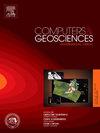Unsupervised seismic reconstruction via deep learning with one-dimensional signal representation
IF 4.4
2区 地球科学
Q1 COMPUTER SCIENCE, INTERDISCIPLINARY APPLICATIONS
引用次数: 0
Abstract
The geometry of seismic surveys often requires modification due to constraints in the acquisition environment, leading to incomplete spatial data coverage and a reduction in the quality and resolution of subsurface imaging. Seismic data reconstruction is critical to restore spatial continuity in such cases. Thus, we propose a novel unsupervised deep learning framework with a trace-by-trace recovery strategy to reconstruct incomplete 3D seismic data, which does not require ground-truth data as the training label. In the proposed framework, we design a one-dimensional signal representation neural network (SRNet) based on the Kolmogorov-Arnold network, which depends on the inherent spatial correlation of seismic signals to achieve single-trace signal representation when using the corresponding spatial coordinate values as its input. The parameters of the SRNet are optimized in a self-learning manner using observed traces and their corresponding spatial coordinates, allowing the well-optimized SRNet to predict seismic signals at unobserved locations. Experiments on the synthetic data and field data examples indicate the effectiveness of the proposed method, and its superiority over the benchmark methods.
基于一维信号表示的深度学习无监督地震重建
由于采集环境的限制,地震勘测的几何形状经常需要修改,导致空间数据覆盖不完整,地下成像的质量和分辨率降低。在这种情况下,地震数据重建对于恢复空间连续性至关重要。因此,我们提出了一种新的无监督深度学习框架,该框架具有逐迹恢复策略,用于重建不完整的三维地震数据,该数据不需要地面真实数据作为训练标签。在该框架中,我们设计了基于Kolmogorov-Arnold网络的一维信号表示神经网络(SRNet),该网络利用地震信号固有的空间相关性,以相应的空间坐标值作为输入,实现信号的单道表示。利用观测到的轨迹及其相应的空间坐标,以自学习的方式优化SRNet的参数,使优化后的SRNet能够预测未观测位置的地震信号。综合数据和现场数据算例的实验表明了该方法的有效性,并优于基准方法。
本文章由计算机程序翻译,如有差异,请以英文原文为准。
求助全文
约1分钟内获得全文
求助全文
来源期刊

Computers & Geosciences
地学-地球科学综合
CiteScore
9.30
自引率
6.80%
发文量
164
审稿时长
3.4 months
期刊介绍:
Computers & Geosciences publishes high impact, original research at the interface between Computer Sciences and Geosciences. Publications should apply modern computer science paradigms, whether computational or informatics-based, to address problems in the geosciences.
 求助内容:
求助内容: 应助结果提醒方式:
应助结果提醒方式:


